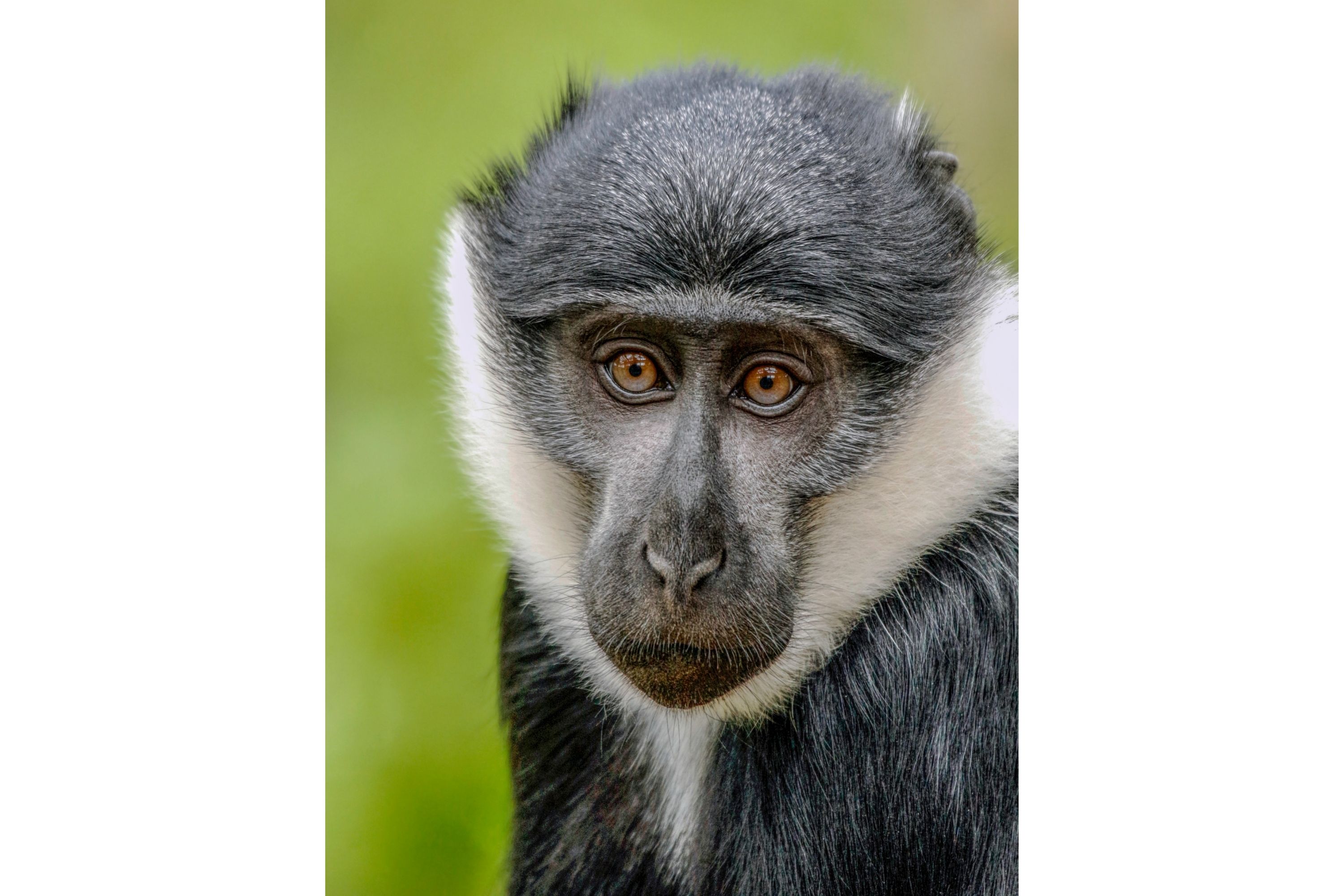Diana monkey
(Cercopithecus diana)

Description
The Diana monkey (Cercopithecus diana) is an Old World monkey found in the high canopy forests in Sierra Leone, Liberia, and western Côte d’Ivoire. Named for its white brow which is said to resemble the bow of the Roman goddess Diana, this black-grey guenon has a white throat, crescent-shaped browband, ruff and beard. The Diana monkey ranges from 40 to 55 cm in length, excluding its tail, which is of a uniform 3–4 cm diameter and 50–75 cm long. Adults weigh between 4–7 kg. They are generally black or dark grey, but have a white throat, crescent-shaped browband, ruff and beard; the browband gave the species its common name, since it was held to resemble the crescent on the brow of the goddess Diana. The monkeys' underarms are also white, and they have a white stripe down their thighs, while the backs of their thighs, and their lower backs, are a chestnut colour. Apart from the browband, ruff and beard, and some fringes on their limbs, their fur is rough and tough. This species can be found in West Africa, from Sierra Leone to Côte d'Ivoire. Two taxa formerly considered subspecies of the Diana monkey have recently been elevated to full species status: the roloway monkey (C. roloway) is found in Côte d'Ivoire and Ghana, and the Dryas monkey (C. dryas) found in the DR Congo. Individual Diana monkeys may live for up to 20 years. This monkey is active during the day. It feeds at all levels of the canopy, and rarely comes down to the ground. Diana monkeys retreat to the upper levels of the trees at night, though they do not make nests. They feed mainly on fruit and insects, but also take flowers, young leaves, and invertebrates, and are in turn preyed on by the crowned hawk-eagle, the leopard, the common chimpanzee, and humans. The Diana monkey is a noisy presence in the forest. Its marked coloration allows a wide range of visual social signals. Female Diana monkeys produce specific alarm calls, alert calls and contact calls depending on the differences in predator fauna, suggesting that the flexibility of female calls are better than that of males.
Taxonomic tree:







